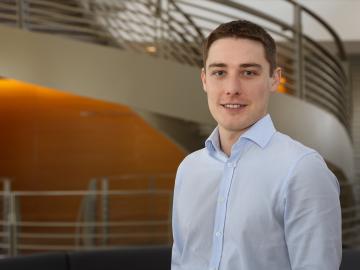
Filter News
Area of Research
- (-) Materials (95)
- Advanced Manufacturing (4)
- Biological Systems (2)
- Biology and Environment (136)
- Biology and Soft Matter (1)
- Computational Biology (2)
- Computational Engineering (3)
- Computer Science (5)
- Electricity and Smart Grid (1)
- Energy Frontier Research Centers (1)
- Energy Science (94)
- Functional Materials for Energy (1)
- Fusion and Fission (25)
- Fusion Energy (15)
- Isotopes (7)
- Materials for Computing (14)
- Mathematics (1)
- National Security (18)
- Neutron Science (124)
- Nuclear Science and Technology (16)
- Quantum information Science (2)
- Supercomputing (75)
News Topics
- (-) Big Data (2)
- (-) Bioenergy (11)
- (-) Biomedical (7)
- (-) Environment (15)
- (-) Fusion (7)
- (-) Nanotechnology (39)
- (-) Neutron Science (33)
- 3-D Printing/Advanced Manufacturing (23)
- Advanced Reactors (4)
- Artificial Intelligence (9)
- Biology (4)
- Buildings (5)
- Chemical Sciences (32)
- Clean Water (3)
- Composites (9)
- Computer Science (17)
- Coronavirus (4)
- Critical Materials (13)
- Cybersecurity (4)
- Energy Storage (34)
- Exascale Computing (2)
- Frontier (3)
- Grid (5)
- High-Performance Computing (4)
- Irradiation (1)
- Isotopes (13)
- ITER (1)
- Machine Learning (5)
- Materials (73)
- Materials Science (78)
- Mathematics (1)
- Microscopy (27)
- Molten Salt (3)
- National Security (3)
- Nuclear Energy (16)
- Partnerships (11)
- Physics (28)
- Polymers (17)
- Quantum Computing (3)
- Quantum Science (11)
- Security (2)
- Simulation (1)
- Space Exploration (2)
- Summit (2)
- Transportation (14)
Media Contacts

Scientists at ORNL used neutron scattering to determine whether a specific material’s atomic structure could host a novel state of matter called a spiral spin liquid.

Researchers at ORNL are tackling a global water challenge with a unique material designed to target not one, but two toxic, heavy metal pollutants for simultaneous removal.

To solve a long-standing puzzle about how long a neutron can “live” outside an atomic nucleus, physicists entertained a wild but testable theory positing the existence of a right-handed version of our left-handed universe.

ORNL scientists will present new technologies available for licensing during the annual Technology Innovation Showcase. The event is 9 a.m. to 3 p.m. Thursday, June 16, at the Manufacturing Demonstration Facility at ORNL’s Hardin Valley campus.

Researchers at ORNL are teaching microscopes to drive discoveries with an intuitive algorithm, developed at the lab’s Center for Nanophase Materials Sciences, that could guide breakthroughs in new materials for energy technologies, sensing and computing.

A study led by researchers at ORNL could help make materials design as customizable as point-and-click.

Ten scientists from the Department of Energy’s Oak Ridge National Laboratory are among the world’s most highly cited researchers, according to a bibliometric analysis conducted by the scientific publication analytics firm Clarivate.

ORNL's Larry Baylor and Andrew Lupini have been elected fellows of the American Physical Society.

Matthew Ryder has been named an emerging investigator by the American Chemical Society journal Crystal Growth and Design. The ACS recognized him as “one of an emerging generation of research group leaders for his work on porous materials design.”

A team led by the ORNL has found a rare quantum material in which electrons move in coordinated ways, essentially “dancing.”


